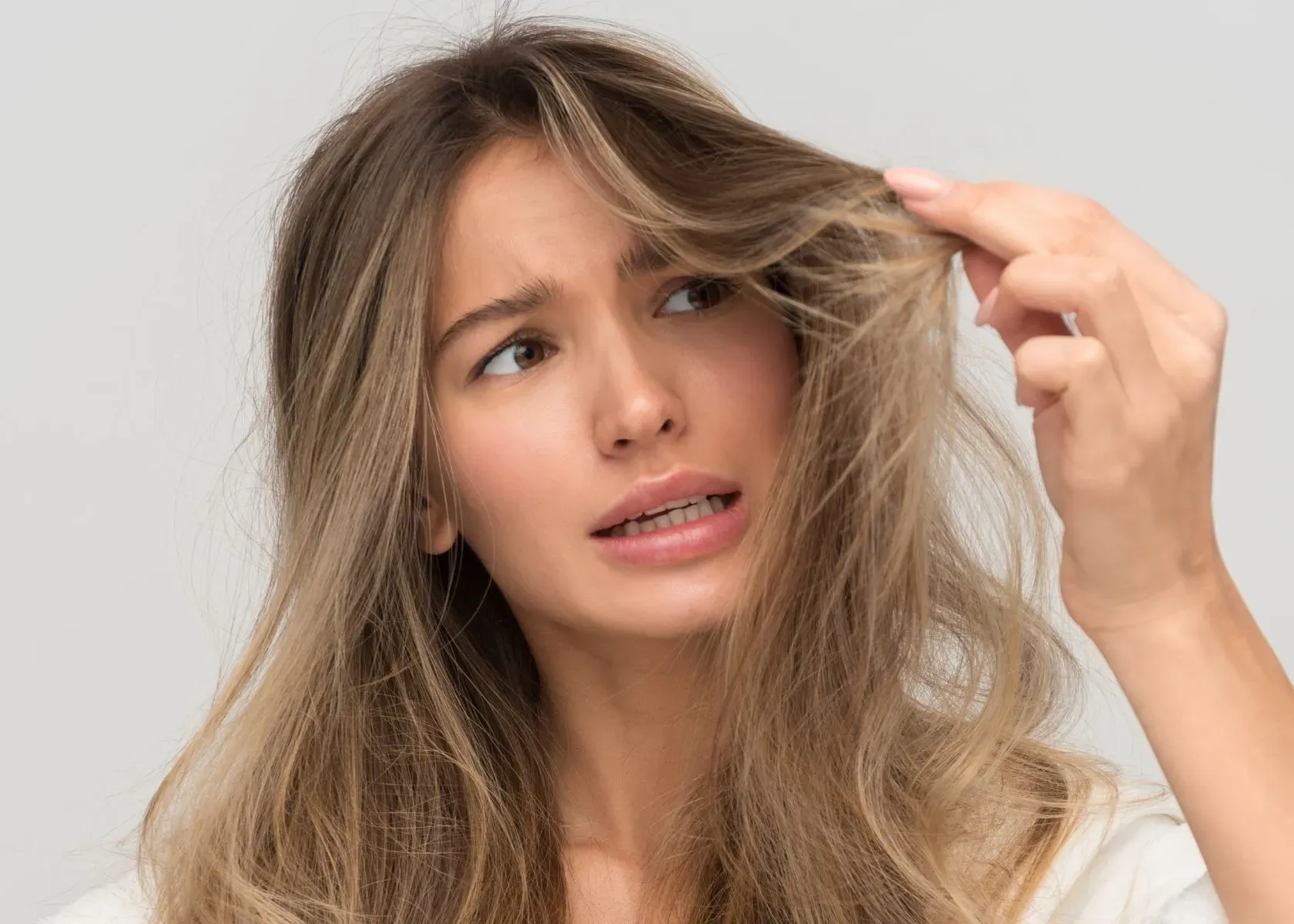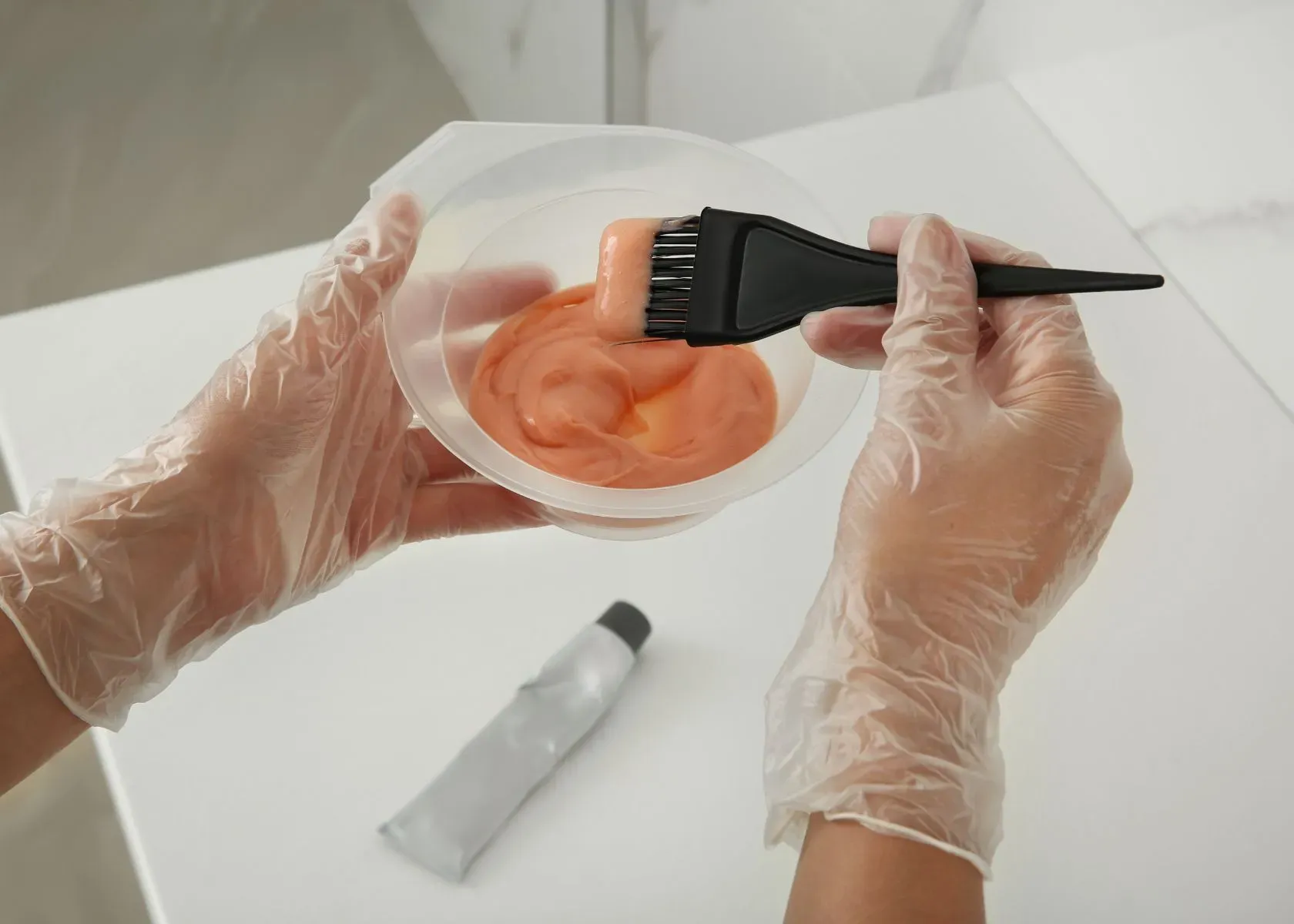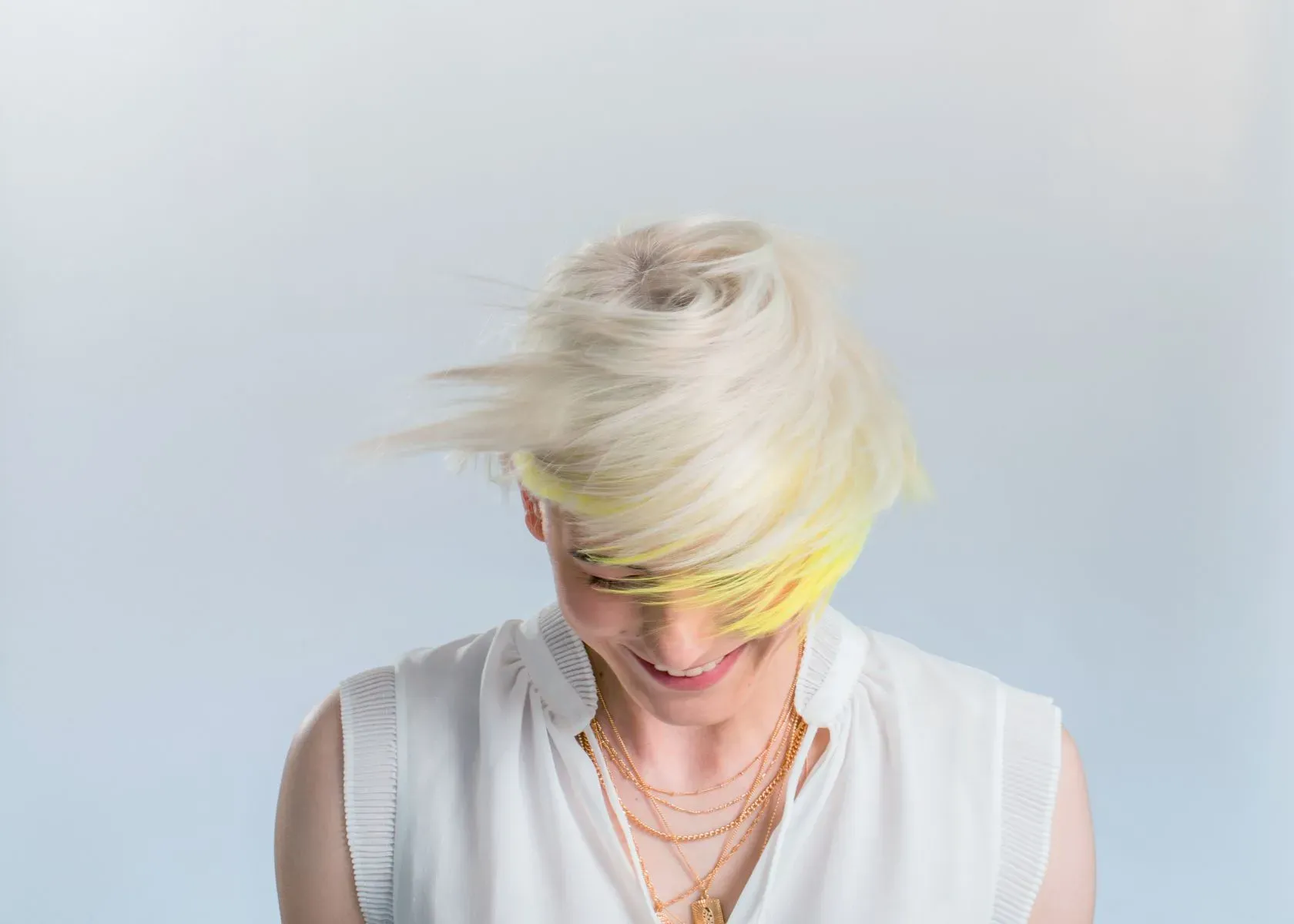Bleaching hair is a popular method to lighten or change its color, but many people wonder about the risks of doing it again after only 24 hours. Bleaching involves harsh chemicals that can damage both hair and scalp if not done cautiously.
For those eager for another round of lightening, considering a gentler approach with lower volume developers or spacing out the treatments over three months might be safer options.
It's always wise to consult with a professional hairstylist who can assess your hair's current condition before taking the plunge so soon after initial treatment. Find out how long you really should wait, learn safe alternatives, and get expert tips as we explore this topic further.
Let's get started on this journey to understand the do's and don'ts of double bleaching!
- Bleaching your hair twice within 24 hours can cause severe damage and lead to dry, brittle strands, making it essential to assess the health of your hair and scalp carefully before considering rebleaching.
- It’s recommended to wait at least 4 - 6 weeks before bleaching again, with some experts suggesting a longer period like 3 months for optimal hair health.
- Consultation with a professional colorist is crucial as they can provide personalized advice on whether your hair can handle another bleach treatment soon after the first.
- Consider safer alternatives such as using lower volume developers or opting for non-peroxide options like toners and deep conditioning treatments to maintain color without further damaging the hair.
- Following safe bleaching practices, including pre-bleach care and proper post-treatment maintenance with quality products and regular deep conditioning, is essential for preserving healthy hair.
Factors to Consider Before Bleaching Your Hair Again

Consider the severity of the previous bleach and the current condition of your hair and scalp. These factors will determine if it is safe to bleach your hair again after 24 hours.
Severity of Previous Bleach
The strength of the bleach used during your last hair treatment plays a critical role in determining if it's safe to go through another round. A harsh first bleaching session may have already pushed your locks to their limit, leaving them fragile and more susceptible to damage.
If you've gone with a high-volume developer or left the bleach on for an extended period, your strands are likely compromised.
Assessing the current condition of your hair is essential before even thinking about rebleaching. Look for signs like excessive dryness, brittleness, or breakage that indicate serious stress from previous treatments.
Hair that feels gummy when wet or turns overly elastic has endured protein breakdown and needs time to recover. Ignoring these warning signals can lead to further harm such as split ends and irreversible texture changes.
Always consult with a professional colorist before deciding on another bleaching session following recent processing. They can provide insight into whether your hair can withstand additional chemical exposure or advise you on safer alternatives to achieve desired results without putting your locks at risk again soon after initial treatment.
Condition of Hair
Before bleaching your hair again, it is crucial to assess the current condition of your hair. The strength and resilience of your hair play a significant role in determining whether it can withstand another round of bleaching so soon.
Also, considering factors such as porosity, elasticity, and moisture levels will give insight into how well your hair may respond to rebleaching.
The health of your scalp also directly impacts the condition of your hair. If there are signs of irritation, inflammation, or sensitivity on the scalp from the previous bleaching process, it's essential to allow ample time for it to recover before subjecting it to further chemical treatments.
Scalp Health
Considering the potential harm of bleaching hair too frequently, it's crucial to prioritize scalp health. An unhealthy scalp can lead to irritation, dryness, and even hair loss. It is important to assess your scalp's condition before deciding to bleach your hair again, as an irritated or damaged scalp can worsen with additional chemical treatment.
Furthermore, a healthy scalp promotes strong and vibrant hair growth, making it essential for overall hair health and maintenance.
While waiting for an appropriate interval before rebleaching your hair, taking care of your scalp is equally important. Regularly cleansing your scalp and using products that nourish and moisturize can help maintain its health during the recovery period from any previous bleaching treatments.
Potential Harmful Effects of Bleaching Hair Twice in a Day

Bleaching your hair twice a day can lead to severe damage, scalp irritation, and unpredictable results. It's important to consider the potential risks before deciding to bleach your hair again soon.
Damage to Hair
Repeated bleaching can cause significant damage to your hair, leading to dryness, breakage, and loss of elasticity. Overprocessing from frequent bleaching strips the hair of its natural oils and proteins, resulting in weakened strands that are more prone to breakage and split ends.
Additionally, excessive bleaching can leave the hair cuticle rough and porous, making it difficult for the hair to retain moisture. As a result, this can lead to frizz, dullness, and overall lackluster appearance. Moreover, it can result in more hair damage. Bleaching and hair dyes should be done with caution.
It is essential to consider the potential harm caused by repeated bleaching before deciding to undergo this process within a short timeframe. The risks associated with overbleaching include irreversible damage that may require intensive treatments such as protein masks or keratin treatments for restoration.
Scalp irritation
Repeated bleaching can lead to scalp irritation, causing discomfort and redness. It is essential to consider the health of your scalp before deciding to bleach your hair again after just 24 hours.
Using a lower developer, such as a 20-volume developer, may help reduce the risk of scalp irritation caused by frequent bleaching.
When considering rebleaching, carefully assessing the condition of both your hair and scalp is crucial. It's important not to overlook any signs of sensitivity or damage in these areas before undergoing another round of bleaching.
In addition to potential harm to your hair, frequent bleaching could cause discomfort and irritability on your scalp.
Unpredictable Results
Bleaching your hair again so soon can lead to unpredictable results. The chemical process may not produce the color you desire due to the previous bleach affecting how the new one develops.
Your hair dry might turn out blotchy, and uneven, or have areas that are over-processed or under-processed, leading to an undesirable outcome. Moreover, rushing into a second bleaching session could cause increased damage and breakage due to the stress placed on your hair fibers.
However, if you do choose to rebleach your hair within a short timeframe despite these potential risks, it is crucial to carefully assess the condition of your hair and consider using a lower developer like 20 developers for safer results.
How Long Should You Wait Before Bleaching Again?

It is recommended to wait at least 2-4 weeks before bleaching your hair again, depending on the condition of your hair and scalp health. To find out more about the factors to consider before rebleaching and potential harmful effects, keep reading!
Recommended Waiting Time
To minimize hair damage and promote the health of your hair, the recommended waiting time before bleaching your hair again is at least 4-6 weeks. Waiting longer intervals, such as 8-12 weeks or more, provides additional time for your hair to recover from the previous bleaching and can further reduce the risk of damage.
As a precautionary measure, it's advisable to wait at least 3 months if you are considering rebleaching your hair after a short span.
Avoiding repeated bleaching within a short timeframe helps prevent overprocessing and breakage. When deciding on rebleaching, carefully assess the condition of your hair and seek professional advice on whether it is advisable to bleach again after just 24 hours.
Factors to Consider
When considering re-bleaching your hair after 24 hours, it's important to factor in the severity of the previous bleach, the current condition of your hair, and the health of your scalp. Here are important points to consider before deciding to bleach again:
- Assess the extent of damage from the previous bleaching session and evaluate any signs of breakage or dryness in your hair.
- Consider the overall health of your hair, including its strength, elasticity, and moisture levels.
- Take into account any scalp issues such as sensitivity or irritation that may have resulted from the previous bleaching process.
- Evaluate how frequently you have previously bleached your hair within a certain time period to gauge the potential risk of overprocessing and damage.
- Consult with a professional colorist or stylist to get an expert opinion on whether your hair is healthy enough for another round of bleaching.
- Factor in any recent chemical treatments or intense styling that may have affected the resilience of your hair strands.
- Think about alternative options like using a lower developer or trying toning treatments to achieve your desired hair color without excessive damage.
Alternatives to Bleaching with Peroxide

Consider using a hair toner or deep conditioning treatments to achieve the desired color without additional bleaching. To learn more about these alternatives, keep reading!
Use of Hair Toner
Hair toner is an effective solution for neutralizing unwanted brassy or yellow tones in bleached hair. It works by adding subtle shades to your hair to enhance the overall color and achieve a more natural look.
By using a hair toner, you can adjust the undertones of your hair after bleaching, resulting in a more desirable shade. Additionally, it helps restore balance to your hair's pH levels and can leave your locks looking vibrant and healthy.
Applying hair toner is an essential step in maintaining the desired shade after bleaching. Whether you opt for a salon treatment or choose an at-home toning product, it's crucial to follow all instructions carefully for the best results.
Deep Conditioning Treatments
Deep conditioning treatments are essential to restore moisture and strength to your hair after bleaching. These treatments can help repair damage caused by the bleaching process, leaving your hair feeling soft and looking healthy.
Conditioning masks with ingredients like keratin, argan oil, and shea butter can deeply nourish the hair, promoting recovery from the effects of bleaching.
Regular deep conditioning treatments can also improve the overall texture and manageability of your hair post-bleaching. They help maintain the natural oils in your scalp while providing necessary hydration to dry strands without weighing them down.
By incorporating these treatments into your routine, you can aid in the recovery process of your hair while preventing further damage from repeated bleaching sessions.
For optimal results, it's important to choose a deep conditioning treatment that is specifically formulated for damaged or chemically treated hair. Using such products will ensure that you provide targeted care for your vulnerable locks as they recover from the stress of bleaching.
By carefully selecting high-quality deep conditioning products tailored for post-bleached hair care needs, you can expedite the healing process and achieve healthier-looking hair.
Tips and Warnings for Bleaching Hair Twice a Day

Prioritize hair health with deep conditioning treatments, use recommended products, and follow safety tips to minimize damage when bleaching twice a day. For more detailed insights on rebleaching your hair, continue reading our blog.
Pre-Bleaching Care
To ensure the best outcome when bleaching your hair again, it is crucial to provide pre-bleaching care. Begin by thoroughly assessing the current condition of your hair and scalp. Use a hydrating and nourishing deep conditioning treatment at least 24 hours before the bleaching process to help strengthen and protect your hair.
Avoid washing your hair right before bleaching to retain natural oils that act as a protective barrier during the process. Additionally, consider using a pre-bleach treatment designed to minimize damage and promote overall hair health.
As part of pre-bleaching care, prioritize using products containing keratin or other strengthening ingredients to fortify your hair strands and reduce breakage throughout the bleaching process.
Product Recommendations
Once you've taken the necessary precautions and prepared your hair for bleaching, it's essential to use high-quality bleach products. Look for a reputable brand that offers gentle bleaching formulas specifically designed to minimize damage to your hair.
Opt for a bleach with conditioning agents and moisturizing properties to help mitigate potential harm from the process. Additionally, consider using protective treatments or serums before and after bleaching, as these can help maintain your hair's health and strength throughout the process.
To further safeguard your hair, invest in a good quality toner that can neutralize any unwanted tones post-bleaching. Choose a toner that complements your desired hair color to achieve the best results.
Tips for Safe Bleaching
To safely bleach your hair again, follow these tips:
- Assess the Condition of Your Hair: Check for any signs of damage or breakage before considering rebleaching.
- Use Lower Developer: Opt for a 20-volume developer instead of a higher one to minimize damage when bleaching twice in a short timeframe.
- Pre-Bleaching Care: Deep condition your hair before bleaching again to improve its strength and resilience.
- Consult a Professional: Get advice from a hair colorist or stylist to determine if it's safe to bleach your hair again soon.
- Choose Quality Products: Use reputable and gentle bleaching products to minimize potential damage to your hair.
- Consider Waiting Longer: Waiting at least 4-6 weeks, or even 3 months, before rebleaching is preferable for healthier results.
- Monitor Scalp Health: Pay attention to any signs of irritation or sensitivity on your scalp during the bleaching process.
- Post-Bleaching Care: Follow up with deep conditioning treatments and use nourishing hair products like purple shampoo to aid in recovery after rebleaching.
Can I Bleach My Hair Again After 24 Hours - FAQs
Many people who bleach their hair at home have questions afterward about how soon they can safely bleach it again. Bleaching hair is a process that removes pigment and can damage hair if done too often or incorrectly. In the frequently asked questions (FAQs) section below, we address some of the common questions around timing and safety when bleaching hair multiple times.
Is it safe to bleach my hair again after 24 hours?
It is generally not recommended to rebleach your hair within 24 hours due to the risk of significant hair damage and compromise to hair health.
What should I do before considering bleaching my hair again?
Before deciding on rebleaching, consult with a professional hair colorist or stylist in a salon for advice on your specific hair condition and the recovery time needed.
How long should I wait before bleaching my hair once more?
Hair experts often suggest waiting at least several weeks and ensuring proper hair maintenance before undergoing another bleaching process for safety.
Can toning help if I'm unhappy with my bleach results instead of bleaching again immediately?
Hair toning after an initial bleach may correct unwanted hues without immediate rebleaching, helping you achieve the desired color while allowing your hair some recovery time.
What can I do to care for my recently bleached hair?
Post-bleach, follow a dedicated routine using quality products aimed at repairing damage from the chemicals involved in the bleaching process and maintaining overall healthy locks.
Conclusion
Bleaching your hair again after only 24 hours should be approached with caution. Assess the condition of your hair before deciding to proceed. Waiting at least 4-6 weeks is recommended for the health of your hair.
Using a lower developer can be safer if you choose to bleach again in a short timeframe. Consider consulting with a professional to ensure the safety and health of your hair are prioritized.
If you have already bleached your hair after 24 hours, feel free to share your experience with all of us in the comments section below.
References
- JEONG, M. S., LEE, C. M., JEONG, W. J., KIM, S. J., & LEE, K. Y. (2010). Significant damage of the skin and hair following hair bleaching. The Journal of Dermatology, 37(10), 882-887.
- Nagai, A., Komoriya, H., Bunai, Y., Yamada, S., Jiang, X., & Ohya, I. (1991). Effect of hair dyes and bleach on the hair protein patterns as revealed by isoelectric focusing. Electrophoresis, 12(6), 451-453.
Read More About Bleaching Your Hair





